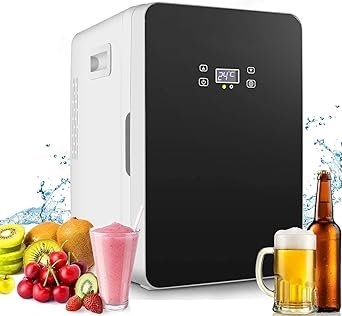When it comes to making your road trips or outdoor gatherings more comfortable and convenient, having access to cold drinks and fresh food is a must. This is where the concept of powering a mini fridge using an inverter comes into play. Whether you’re planning a camping trip, have a mobile home, or need an emergency setup during power outages, understanding how to safely and efficiently run a mini fridge off an inverter is essential. At TheKitchenApplianceDad.com, we’re diving into the details to help you make the best choice for your portable refrigeration needs.
An inverter is a device that converts direct current (DC) from a battery (usually a car battery or a standalone battery pack) into alternating current (AC), the type of electricity typically used in your home. This conversion allows you to power household appliances and other electronic devices from a car battery or a similar power source.
Before purchasing an inverter, it’s crucial to know the power requirements of your mini fridge. This information can usually be found on a label inside the fridge door or in the user manual. Look for the wattage requirement, which will guide you in selecting an inverter with the appropriate output.
Mini fridges typically require between 50 and 100 watts when running, but they can surge to about two to three times that amount when the compressor starts up. Therefore, it’s recommended to choose an inverter that can handle at least twice the running wattage of your fridge.
For mini fridges, a pure sine wave inverter is preferable due to its ability to handle the appliance’s motor efficiently.
To run a mini fridge continuously, you will need a battery with sufficient capacity to handle the load. The capacity of batteries is measured in amp-hours (Ah). To determine how large a battery you need, you can use the following formula:
Battery Capacity (Ah)=(Fridge Power (W)×Hours of OperationBattery Voltage (V))×1.5
The multiplication by 1.5 accounts for inverter inefficiencies and the recommended practice of not depleting your battery entirely.
For example, if your fridge runs at 80 watts on a 12V system and you want it to run for 10 hours, you would need:
Battery Capacity=(80×1012)×1.5=100 Ah
When setting up your inverter and battery to run a mini fridge, there are several safety considerations to keep in mind:
Running a mini fridge off an inverter is a feasible solution for those needing portable cooling on the go or during power outages. By understanding and following the guidelines for inverter and battery selection, setup, and safety, you can enjoy the convenience of a mini fridge virtually anywhere. At TheKitchenApplianceDad.com, we’re committed to helping you make the most of your kitchen appliances, even when you’re far from the traditional kitchen setting.
Remember, the right setup will not only ensure efficient operation but also protect the longevity of your mini fridge and the safety of everyone around it. Whether you’re tailgating, camping, or heading out on a road trip, having access to cold food and drinks can make your adventure all the more enjoyable.

